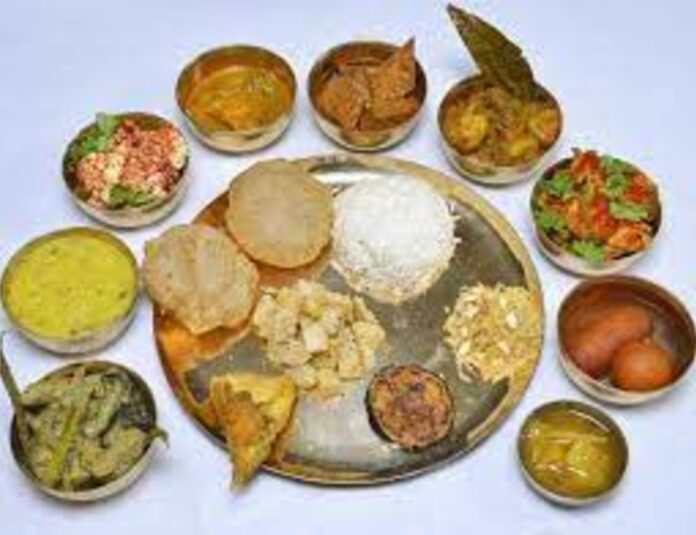Bengali Ranna Recipe
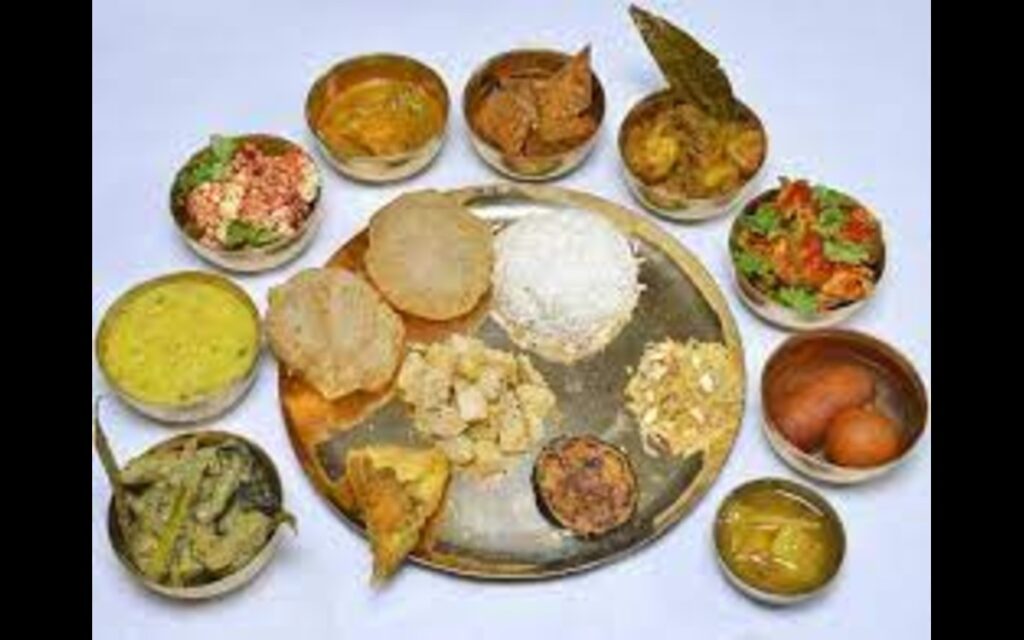
Bengali cuisine, lovingly called “Bengali Ranna,” is a tantalizing amalgamation of flavors that reflects the rich cultural heritage of Bengal. With its unique blend of aromatic spices, seasonal produce, and a passion for culinary artistry, Bengali cooking promises a gastronomic journey like no other. In this article, we will explore the vibrant world of Bengali ranna and uncover some of its most cherished recipes.
The Rich Culinary Heritage of Bengali Ranna Recipe
Bengali cooking is a celebration of history and tradition. Influenced by the land’s geographical diversity and cultural interactions, it has evolved over centuries. From the royal kitchens of Nawabs to the humble abodes of Bengali households, the cuisine has captured the essence of Bengal’s soul.
Staple Ingredients in Bengali Cuisine
Before diving into the recipes, it’s essential to understand the core ingredients that form the foundation of Bengali cooking. Mustard oil, panch phoron (five-spice blend), and an array of aromatic spices like turmeric, cumin, and coriander are the heart of many dishes.
Traditional Bengali Breakfast Dishes
Bengali breakfasts are hearty and flavorful, setting a perfect start to the day. Luchi and Alur Torkari, a combination of deep-fried puffed bread and spiced potato curry, is a beloved choice. Another favorite is Chingri Bhaja, where succulent prawns are marinated and fried to perfection.
Certainly! Bengali cuisine is renowned for its delectable fish preparations, and here are two popular fish dishes explained in detail:
Machher Jhol (Fish Curry)
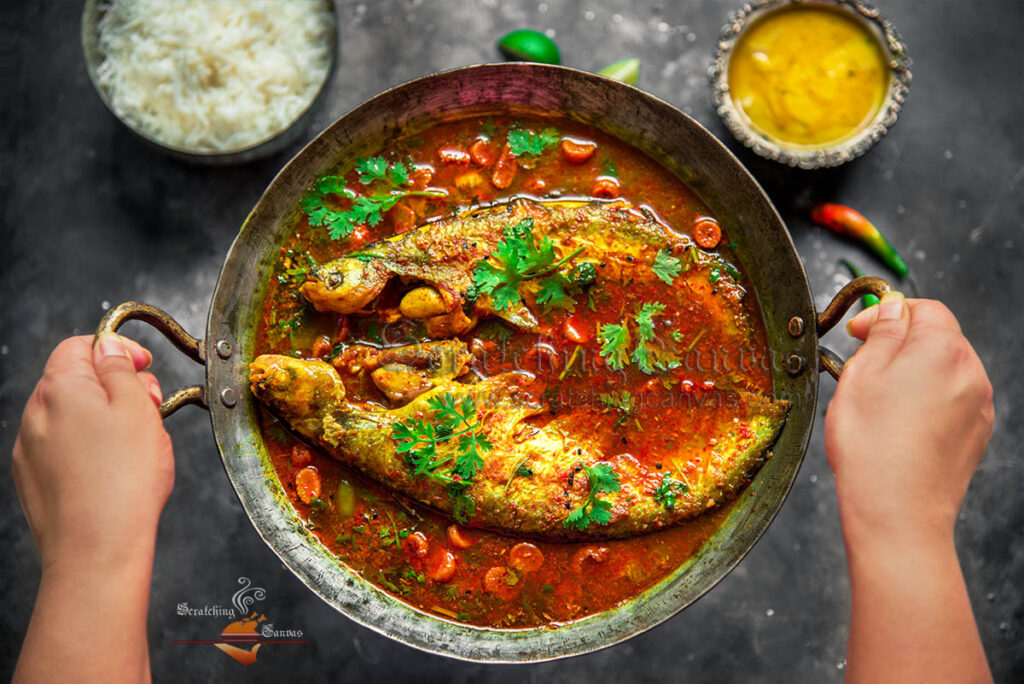
Ingredients:
- 500g fish (Rohu, Katla, or Hilsa), cut into pieces
- 2 medium-sized potatoes, peeled and quartered
- 2 tablespoons mustard oil
- 1 teaspoon cumin seeds
- 2-3 green chilies, slit
- 1 teaspoon turmeric powder
- 1 teaspoon cumin powder
- 1 teaspoon coriander powder
- 1/2 teaspoon red chili powder (adjust to taste)
- Salt, to taste
- 2 cups water
- Fresh coriander leaves, for garnish
Shop Here:
Instructions:
- Wash the fish pieces thoroughly and marinate them with half a teaspoon of turmeric powder and a pinch of salt. Let it sit for 15 minutes.
- In a deep-bottomed pan or kadhai, heat the mustard oil until it reaches its smoking point. Then, reduce the heat to medium.
- Carefully add the marinated fish pieces to the hot oil and fry them until they turn golden brown on both sides. Once done, remove the fish pieces and set them aside.
- In the same oil, add cumin seeds and green chilies. Let them splutter and release their aroma.
- Add the quartered potatoes to the pan and sauté them for a few minutes until they start to turn slightly golden.
- Reduce the flame’s intensity and introduce turmeric powder, cumin powder, coriander powder, red chili powder, and salt. Blend these aromatic spices thoroughly with the potatoes.
- Gently pour water into the pan and allow it to reach a boiling point. Subsequently, reintroduce the fried fish pieces into the pan.
- Cover the pan with a lid and let the fish curry simmer on low heat for about 10-15 minutes or until the potatoes are fully cooked.
- Check the seasoning and adjust salt and spices according to your taste preference.
- Garnish with fresh coriander leaves before serving the Machher Jhol hot with steamed rice.
Paturi (Fish Wrapped in Banana Leaf)
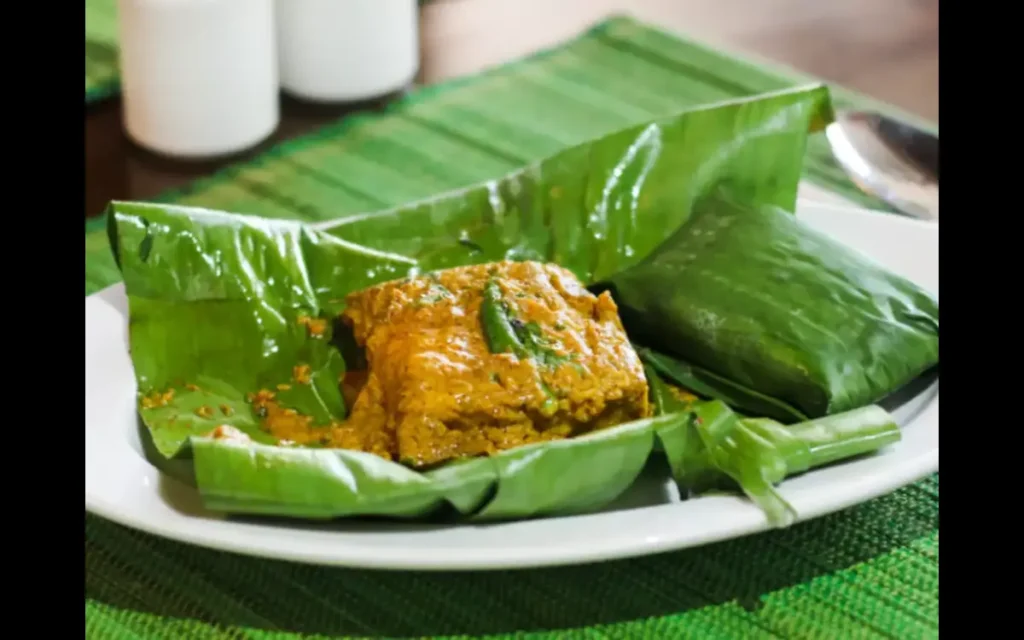
Ingredients:
- 500g fish fillets (Bhetki, Hilsa, or Pomfret)
- 2 tablespoons mustard paste (made from black mustard seeds)
- 1 tablespoon mustard oil
- 1 teaspoon turmeric powder
- 1 tablespoon poppy seed paste
- 2-3 green chilies, finely chopped
- 1 teaspoon grated ginger
- Salt, to taste
- Banana leaves, cut into square pieces (large enough to wrap the fish fillets)
- You may use kitchen twine or toothpicks to fasten and secure the banana leaf wraps.
Shop Here:
Instructions:
- Wash the fish fillets and pat them dry with a paper towel.
- In a bowl, mix together the mustard paste, mustard oil, turmeric powder, poppy seed paste, chopped green chilies, grated ginger, and salt to form a smooth marinade.
- Marinate the fish fillets in this mixture and let them sit for about 30 minutes to absorb the flavors.
- Preheat the oven to 180°C (350°F) or prepare a steamer.
- Take a piece of banana leaf and lightly heat it over an open flame to make it pliable.
- Place a marinated fish fillet on the banana leaf and fold the leaf to cover the fish completely.
- Secure the folded leaf with kitchen twine or toothpicks to create a parcel.
- Repeat the same process for all the fish fillets.
- If using an oven, place the banana leaf parcels on a baking tray and bake for about 15-20 minutes or until the fish is cooked through.
- If using a steamer, steam the banana leaf parcels for about 20-25 minutes until the fish is tender and fully cooked.
- Carefully open the banana leaf parcels and transfer the Paturi to a serving plate.
- Serve the Paturi hot with steamed rice or as a delightful addition to your Bengali feast.
Both Machher Jhol and Paturi are cherished Bengali fish preparations, each offering a unique blend of flavors that truly celebrate the culinary heritage of Bengal. Enjoy these fish delicacies with your loved ones and experience the delight of Bengali Ranna firsthand!
Mouthwatering Meat Dishes
Bengali cuisine also offers an array of meat-based delights. Kosha Mangsho, a slow-cooked mutton curry with a burst of spices, exemplifies the art of blending flavors. Chicken Dak Bungalow, a dish with Anglo-Indian origins, showcases the fusion of culinary traditions.
Certainly! Bengali cuisine offers a variety of mouthwatering meat dishes that are sure to tantalize your taste buds. Here are two popular meat dishes, each explained in detail:
Kosha Mangsho (Slow-cooked Mutton)
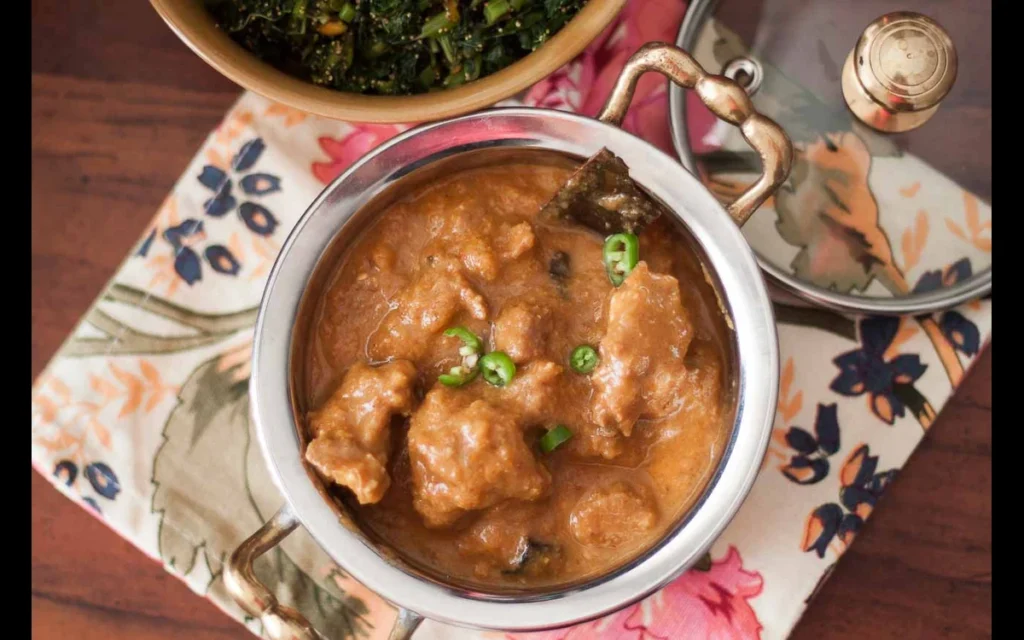
Ingredients:
- 500g mutton, cut into pieces
- 2 large onions, finely sliced
- 3-4 tablespoons mustard oil
- 1 tablespoon ginger-garlic paste
- 2-3 green chilies, slit
- 1/2 teaspoon turmeric powder
- 1 teaspoon cumin powder
- 1 teaspoon coriander powder
- Include 1 teaspoon of red chili powder (modify as per your preference for spiciness).
- 1 teaspoon garam masala
- 1 tablespoon yogurt
- 1 tablespoon tomato puree (optional)
- Salt, to taste
- 2 cups water
- Fresh coriander leaves, for garnish
Shop Here:
Instructions:
- In a heavy-bottomed pot or pressure cooker, heat the mustard oil until it starts to smoke. Then, reduce the heat to medium.
- Add the finely sliced onions to the hot oil and sauté them until they turn golden brown and caramelized.
- Add ginger-garlic paste and green chilies to the onions and cook for a few minutes until the raw aroma disappears.
- Lower the heat and add turmeric powder, cumin powder, coriander powder, red chili powder, garam masala, and salt. Mix the spices well with the onions and cook until the oil starts to separate from the masala.
- Add the mutton pieces to the pot and mix them thoroughly with the masala. Cook the mutton for about 5-7 minutes until it changes color.
- If using a pressure cooker, add yogurt and tomato puree (if using) to the mutton and mix well. Cook for another 2 minutes.
- Pour in water and bring it to a boil. If using a pressure cooker, close the lid and cook the mutton on medium heat for about 15-20 minutes or until it becomes tender.
- Should you opt for a standard pot, enshroud it with a lid and permit the mutton to gently simmer on low heat for approximately 1.5 to 2 hours, reaching a state of perfection through slow-cooking. Stir occasionally and introduce additional water if necessary.
- Check the seasoning and adjust salt and spices according to your taste preference.
- Garnish with fresh coriander leaves before serving Kosha Mangsho hot with steamed rice or traditional Bengali bread like Luchi.
Chicken Dak Bungalow

Ingredients:
- 500g chicken, cut into pieces
- 2 large onions, finely sliced
- 3-4 tablespoons vegetable oil
- 1 tablespoon ginger-garlic paste
- 2-3 green chilies, slit
- 1/2 teaspoon turmeric powder
- 1 teaspoon cumin powder
- 1 teaspoon coriander powder
- Utilize 1 teaspoon of red chili powder (customize according to your taste preferences).
- 1 teaspoon garam masala
- 1 tablespoon tomato puree
- 1 tablespoon mustard paste (optional)
- Salt, to taste
- 2 cups water
- Fresh coriander leaves, for garnish
Shop Here:
Instructions:
- In a deep frying pan or kadhai, heat the vegetable oil over medium heat.
- Add the finely sliced onions to the hot oil and sauté them until they become soft and translucent.
- Add ginger-garlic paste and green chilies to the onions and cook for a few minutes until the raw aroma disappears.
- Lower the heat and add turmeric powder, cumin powder, coriander powder, red chili powder, garam masala, and salt. Mix the spices well with the onions and cook until the oil starts to separate from the masala.
- Add the chicken pieces to the masala and mix them thoroughly. Cook the chicken for about 5-7 minutes until it changes color.
- Add tomato puree and mustard paste (if using) to the chicken and mix well. Cook for another 2 minutes.
- Pour in water and let it come to a boil. Then, reduce the heat to low, cover the pan with a lid, and let the chicken simmer for about 20-25 minutes or until it is cooked through and tender.
- Check the seasoning and adjust salt and spices according to your taste preference.
- Garnish with fresh coriander leaves before serving Chicken Dak Bungalow hot with steamed rice or traditional Bengali bread.
Both Kosha Mangsho and Chicken Dak Bungalow are flavorful and succulent meat dishes that perfectly represent the artistry of Bengali Ranna. Enjoy these delectable meat preparations with your loved ones and savor the rich flavors of Bengal!
Wholesome Vegetarian Delights
For the vegetarian palate, Bengal boasts an abundance of delectable dishes. Shukto, a medley of vegetables cooked in a mustard-based gravy, exemplifies the unique balance of flavors. Chanar Dalna, featuring soft paneer cubes in a spiced tomato gravy, is a vegetarian’s delight.
Certainly! Bengali cuisine offers a delightful array of wholesome vegetarian dishes that are packed with flavor and nutrition. Here are two popular vegetarian delights, each explained in detail:
Shukto (Mixed Vegetable Medley)

Ingredients:
- 1 cup bitter gourd (karela), thinly sliced
- 1 cup raw banana, thinly sliced
- 1 cup sweet potato, diced
- 1 cup eggplant (brinjal), diced
- 1 cup drumsticks, cut into 2-inch pieces
- 1 cup radish (mooli), thinly sliced
- 1 cup potato, diced
- 1 tablespoon mustard oil
- 1/2 teaspoon mustard seeds
- 1/2 teaspoon cumin seeds
- 2 dry red chilies
- 1/2 teaspoon turmeric powder
- 1 tablespoon poppy seed paste
- 1 tablespoon mustard paste
- 1 cup milk
- Salt, to taste
- Sugar, to taste
- Fresh coriander leaves, for garnish
Shop Here:
Instructions:
- In a large pan, heat mustard oil until it starts to smoke. Then, reduce the heat to medium.
- Add mustard seeds, cumin seeds, and dry red chilies to the hot oil. Let them splutter and release their aroma.
- Incorporate bitter gourd, raw banana, sweet potato, eggplant, drumsticks, radish, and potato into the pan. Sauté the assortment of vegetables for a brief duration until they begin to tenderize.
- Reduce the heat and introduce turmeric powder, poppy seed paste, mustard paste, and salt. Thoroughly blend the spices with the medley of vegetables.
- Pour in milk and let the vegetables cook on low heat until they are tender.
- Check the seasoning and adjust salt and sugar according to your taste preference. Shukto has a balance of bitter and sweet flavors.
- Garnish with fresh coriander leaves before serving Shukto hot with steamed rice.
Chanar Dalna (Paneer Curry)
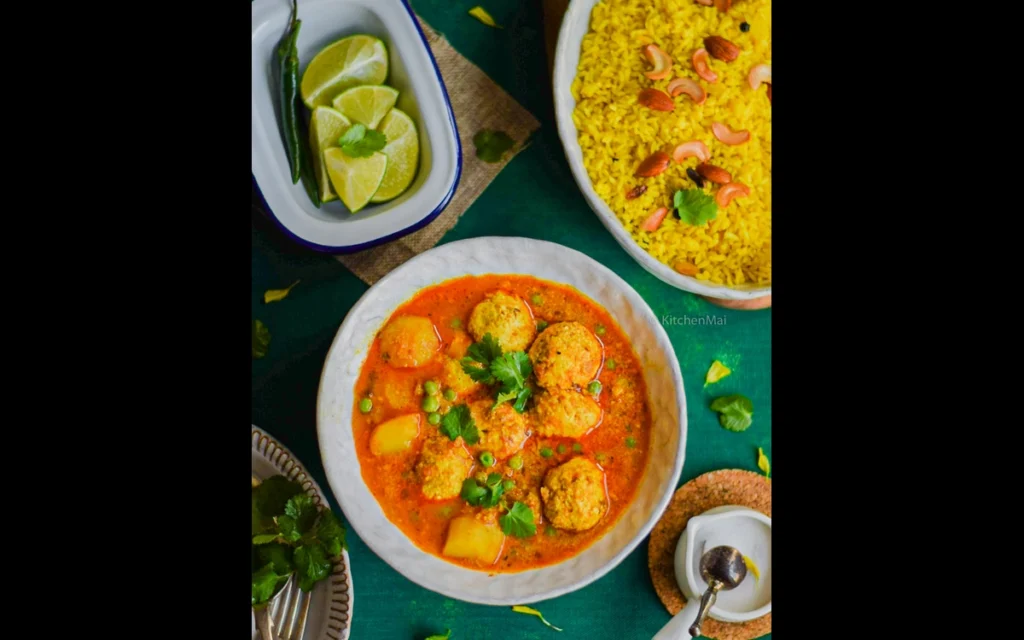
Ingredients:
- A portion of 250g paneer, which is Indian cottage cheese, sliced into cubes.
- 2 large potatoes, peeled and diced
- 2 large tomatoes, finely chopped
- A measurement of 1 cup green peas, available either fresh or frozen.
- 1 tablespoon ginger-garlic paste
- 2-3 green chilies, slit
- 1/2 teaspoon turmeric powder
- 1 teaspoon cumin powder
- 1 teaspoon coriander powder
- 1/2 teaspoon red chili powder (adjust to taste)
- 1 teaspoon garam masala
- 1 tablespoon vegetable oil
- 1 tablespoon ghee (clarified butter)
- 1 cup water
- Salt, to taste
- Fresh coriander leaves, for garnish
Shop Here:
Instructions:
- In a deep frying pan or kadhai, heat vegetable oil and ghee over medium heat.
- Add diced potatoes to the hot oil and fry them until they turn golden brown. Remove the fried potatoes and set them aside.
- In the same oil, add paneer cubes and fry them until they become lightly golden.
Take out the fried paneer and keep it aside. - Lower the heat and add ginger-garlic paste and green chilies to the oil. Sauté them for a few minutes until the raw aroma disappears.
- Add finely chopped tomatoes to the pan and cook until they become soft and mushy.
- Lower the heat and add turmeric powder, cumin powder, coriander powder, red chili powder, garam masala, and salt. Thoroughly blend the spices with the tomatoes.
- Add fried potatoes and green peas to the masala. Ensure a thorough mixing to coat them entirely with the spices.
- Pour in water and let the curry simmer on low heat until the vegetables are fully cooked and the gravy thickens.
- Add fried paneer cubes to the curry and mix gently to combine.
- Check the seasoning and adjust salt and spices according to your taste preference.
- Garnish with fresh coriander leaves before serving Chanar Dalna hot with steamed rice or traditional Bengali bread.
Both Shukto and Chanar Dalna showcase the versatility of vegetarian cooking in Bengali cuisine, where a blend of flavors and textures creates a delightful and wholesome dining experience. Enjoy these vegetarian delights with your loved ones and relish the goodness of Bengali Ranna!
Savory Snacks and Street Food
The streets of Bengal come alive with an array of savory snacks. Phuchka, known as Pani Puri in other parts of India, offers a burst of tangy and spicy flavors. Jhalmuri, a delightful mixture of puffed rice, peanuts, and spices, is a popular street food favorite.
Certainly! Bengali cuisine offers a plethora of savory snacks and street food that are loved by people of all ages. Here are two popular savory treats, each explained in detail:
Phuchka (Pani Puri or Golgappa)
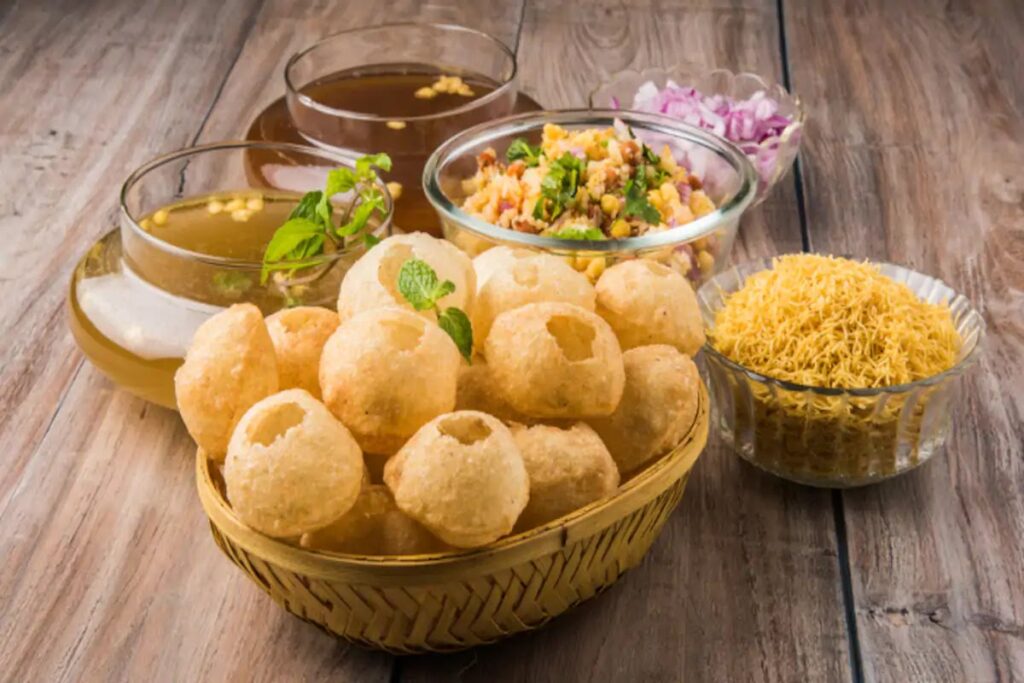
Ingredients:
For Phuchka Shells:
- 1 cup semolina (sooji)
- 1/4 cup all-purpose flour
- A pinch of baking soda
- Water, as needed
- Vegetable oil, for frying
Shop Here:
For Phuchka Filling:
- 1 cup boiled and mashed potatoes
- 1/2 cup boiled chickpeas
- 1/2 cup tamarind chutney
- 1/2 cup spicy green mint-coriander chutney
- 1/2 cup chopped onions
- 1/2 cup chopped tomatoes
- 1/2 cup chopped cucumber
- Chaat masala, to taste
- Black salt, to taste
- Roasted cumin powder, to taste
- Red chili powder, to taste
- Chopped fresh coriander leaves, for garnish
Shop Here:
Instructions:
For Phuchka Shells:
- In a mixing bowl, combine semolina, all-purpose flour, and a pinch of baking soda.
- Gradually add water and knead the mixture into a smooth and stiff dough.
- Place a damp cloth over the dough, allowing it to rest for approximately 15-20 minutes.
- Divide the dough into small equal-sized balls and roll each ball into a flat, thin disc (approximately 2 inches in diameter).
- Heat vegetable oil in a deep frying pan over medium heat.
- Fry the discs one by one until they puff up and turn golden brown.
- Remove the Phuchka shells from the oil and drain them on a paper towel to remove excess oil.
For Phuchka Filling:
- In a bowl, mix together the mashed potatoes and boiled chickpeas.
- Add chaat masala, black salt, roasted cumin powder, and red chili powder to the potato-chickpea mixture. Mix well to combine the flavors.
- Carefully make a small hole in each Phuchka shell using your finger.
- Stuff the Phuchka shells with the potato-chickpea filling, ensuring it is evenly distributed.
- Top each Phuchka with tamarind chutney and spicy green mint-coriander chutney as per your taste preference.
- Garnish with chopped onions, tomatoes, cucumbers, and fresh coriander leaves.
- Serve Phuchka immediately, allowing the burst of flavors to delight your taste buds.
Telebhaja (Bengali Street Fritters)

Ingredients:
- 1 cup gram flour (besan)
- 1/4 cup rice flour
- 1/2 teaspoon turmeric powder
- 1 teaspoon cumin seeds
- 1 teaspoon ajwain (carom seeds)
- Include a teaspoon of red chili powder (modify according to your preferred level of spiciness).
- A pinch of baking soda
- Salt, to taste
- Water, as needed
- Vegetable oil, for deep frying
- Assorted vegetables (such as potato slices, eggplant slices, onion rings, cauliflower florets, and green chilies)
Shop Here:
Instructions:
- In a mixing bowl, combine gram flour, rice flour, turmeric powder, cumin seeds, ajwain, red chili powder, baking soda, and salt.
- Gradually add water and whisk the mixture into a smooth and thick batter.
- Heat vegetable oil in a deep frying pan over medium heat.
- Dip the assorted vegetable slices into the batter, ensuring they are coated evenly.
- Carefully drop the coated vegetables into the hot oil and fry them until they turn golden and crispy.
- Remove the Telebhaja from the oil and drain them on a paper towel to remove excess oil.
- Serve Telebhaja hot with a side of spicy green chutney or mustard sauce for dipping.
Both Phuchka and Telebhaja are cherished savory snacks in Bengali cuisine, enjoyed by people on the streets and at home as popular tea-time treats. Try these delicious offerings, and experience the flavors of authentic Bengali street food!
Heavenly Bengali Sweets
No Bengali meal is complete without indulging in the heavenly realm of sweets. Rasgulla, soft and spongy cheese dumplings soaked in sugar syrup, is an iconic delicacy. Mishti Doi, sweetened yogurt with a caramelized touch, is a divine treat.
Bengali sweets, also known as “Mishti,” are an integral part of the rich culinary heritage of Bengal. These heavenly delights are cherished by people of all ages and are an essential part of festivals, celebrations, and everyday life. Here are two popular Bengali sweets, each explained in detail:
Rasgulla
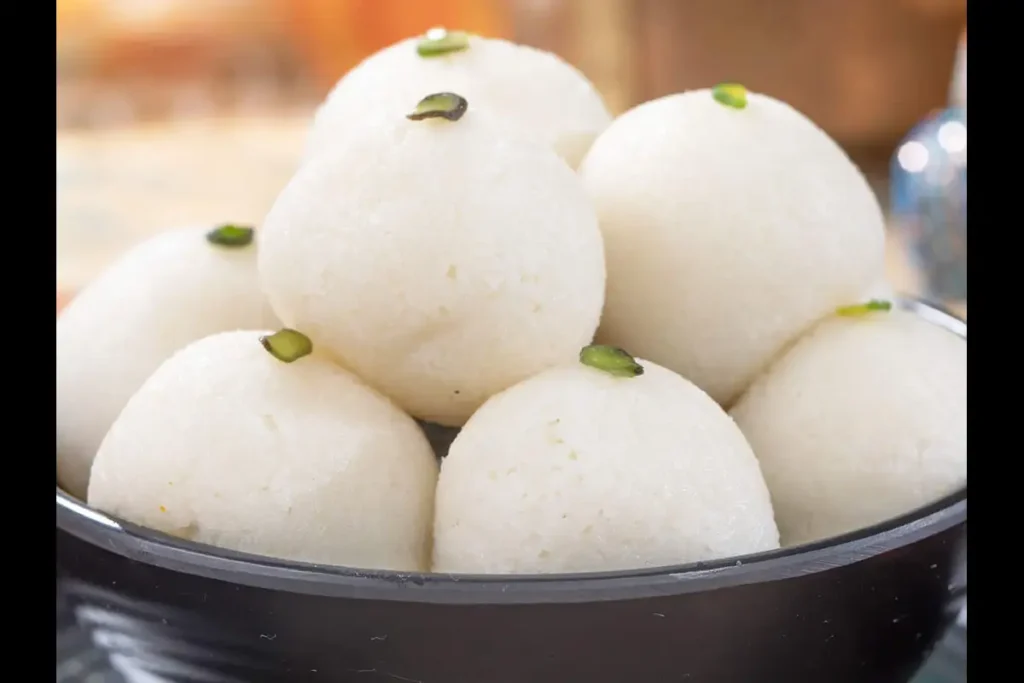
Ingredients:
For Rasgulla Dough:
- 1 liter full-fat milk
- 2 tablespoons lemon juice or vinegar
- 2 cups water
- Ice cubes
Shop Here:
For Sugar Syrup:
- 2 cups sugar
- 4 cups water
- A few saffron strands (optional)
Shop Here:
Instructions:
- In a large pan, heat the full-fat milk until it comes to a boil.
- Lower the heat and add lemon juice or vinegar gradually while stirring continuously.
- The milk will curdle, and the whey will separate from the curdled milk solids (paneer).
- Pour the curdled milk through a muslin cloth or cheesecloth placed over a colander.
- Rinse the paneer under cold water to remove the lemony taste.
- Squeeze out excess water from the paneer and hang it for about 1 hour to drain any remaining whey.
- Knead the paneer until it becomes smooth and there are no lumps.
- Divide the paneer into small, equal-sized balls and roll them into smooth balls.
- In a separate pot, prepare the sugar syrup by dissolving sugar in water and adding saffron strands for flavor and color.
- Bring the sugar syrup to a boil, and then carefully add the paneer balls to the boiling syrup.
- Cover the pot and let the Rasgullas cook on medium heat for about 15 minutes.
- Open the lid and add ice cubes to the syrup to stop further cooking.
- Let the Rasgullas cool to room temperature before refrigerating them.
- Serve chilled Rasgullas and enjoy the melt-in-your-mouth sweetness.
Sandesh

Ingredients:
- 1 liter full-fat milk
- 1/4 cup lemon juice or vinegar
- Incorporate half a cup of powdered sugar (customize to suit your taste preferences).
- A few saffron strands
- 1/2 teaspoon cardamom powder
- Chopped pistachios and almonds, for garnish
Shop Here:
Instructions:
- In a large pan, heat the full-fat milk until it comes to a boil.
- Lower the heat and add lemon juice or vinegar gradually while stirring continuously.
- The milk will curdle, and the whey will separate from the curdled milk solids (paneer).
- Pour the curdled milk through a muslin cloth or cheesecloth placed over a colander.
- Rinse the paneer under cold water to remove the lemony taste.
- Squeeze out excess water from the paneer and hang it for about 30 minutes to drain any remaining whey.
- Knead the paneer until it becomes smooth and there are no lumps.
- In a non-stick pan, cook the paneer on low heat for about 5-7 minutes, stirring constantly.
- Add powdered sugar, saffron strands, and cardamom powder to the paneer. Mix well until the mixture thickens and starts to leave the sides of the pan.
- Remove the pan from heat and let the Sandesh mixture cool slightly.
- Take small portions of the mixture and shape them into small, flat, circular discs or any desired shape.
- Garnish with chopped pistachios and almonds.
- Let the Sandesh cool completely before serving.
Bengali sweets like Rasgulla and Sandesh are not just desserts but also a reflection of Bengal’s sweet culture and culinary excellence. Each bite of these heavenly treats will transport you to a world of pure bliss and leave you craving for more. Enjoy these delightful Bengali sweets and experience the magic of traditional Mishti!
Fusion of Flavors: Anglo-Indian Influences
The British Raj left its mark on Bengali cuisine, leading to delightful Anglo-Indian fusion dishes. Railway Mutton Curry, a legacy of the colonial era, is a testament to this harmonious blend. Fish Orly, a variation of fish fry, is a delightful legacy of the British influence.
The Anglo-Indian cuisine is a unique fusion of flavors that emerged during the colonial era in India, where British influences intertwined with Indian culinary traditions. The marriage of British cooking techniques and Indian spices resulted in a delectable array of dishes that continue to be cherished by food enthusiasts around the world. Here are two prominent examples of Anglo-Indian influences in Indian cuisine, each explained in detail:
Mulligatawny Soup
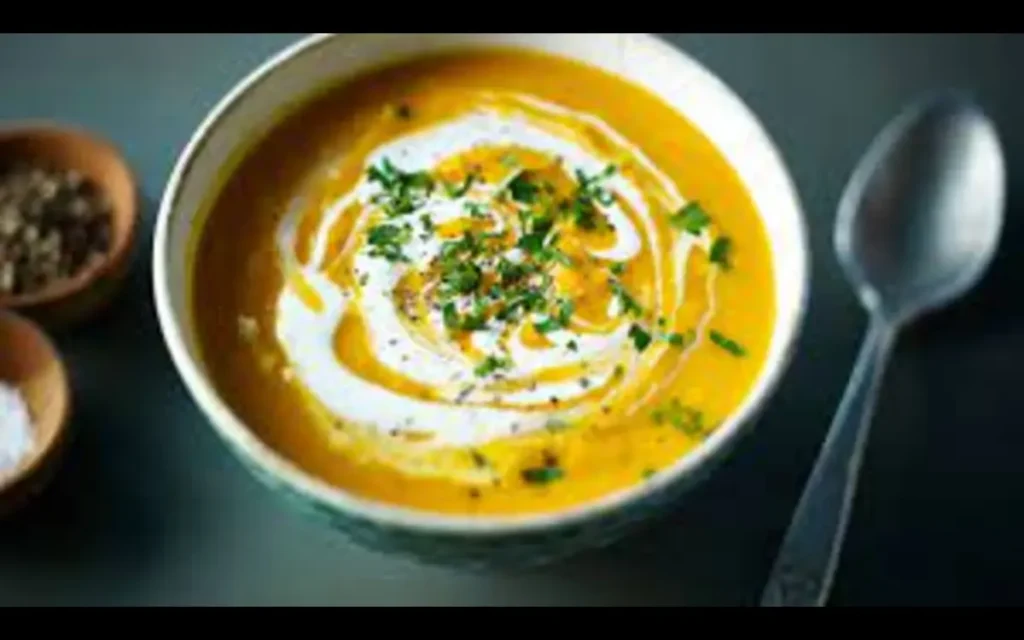
Ingredients:
- Take one cup of red lentils (masoor dal), rinse them thoroughly, and soak in water.
- 1 tablespoon vegetable oil
- 1 onion, finely chopped
- 2 carrots, diced
- 2 celery stalks, diced
- 1 apple, peeled and diced
- 1 tablespoon curry powder
- 1 teaspoon cumin powder
- 1 teaspoon coriander powder
- 1/2 teaspoon turmeric powder
- You may consider adding a quarter teaspoon of cayenne pepper (optional, modify as per your desired level of spiciness).
- 4 cups vegetable or chicken broth
- 1 cup coconut milk
- 2 tablespoons lemon juice
- Salt and pepper, to taste
- Fresh coriander leaves, for garnish
Shop Here:
Instructions:
- Using a sizable pot, warm the vegetable oil over medium heat, then introduce the chopped onions and sauté until they turn translucent.
- Add diced carrots, celery, and apple to the pot. Allow the ingredients to cook for a brief period until the vegetables begin to tenderize.
- Stir in curry powder, cumin powder, coriander powder, turmeric powder, and cayenne pepper (if using). Thoroughly combine the spices to ensure the vegetables are evenly coated.
- After draining the soaked red lentils, incorporate them into the pot, and stir to blend them with the vegetables and spices.
- Pour in the vegetable or chicken broth and bring the mixture to a boil. Reduce the heat and let it simmer for about 20-25 minutes or until the lentils are fully cooked and tender.
- Using a blender or an immersion blender, puree the soup until smooth and creamy.
- Return the pureed soup to the pot and stir in the coconut milk.
- Season with salt, pepper, and lemon juice to balance the flavors.
- Let the Mulligatawny Soup simmer for an additional 5 minutes to meld the flavors.
- Garnish with fresh coriander leaves before serving this Anglo-Indian delight piping hot.
Chicken Tikka Masala
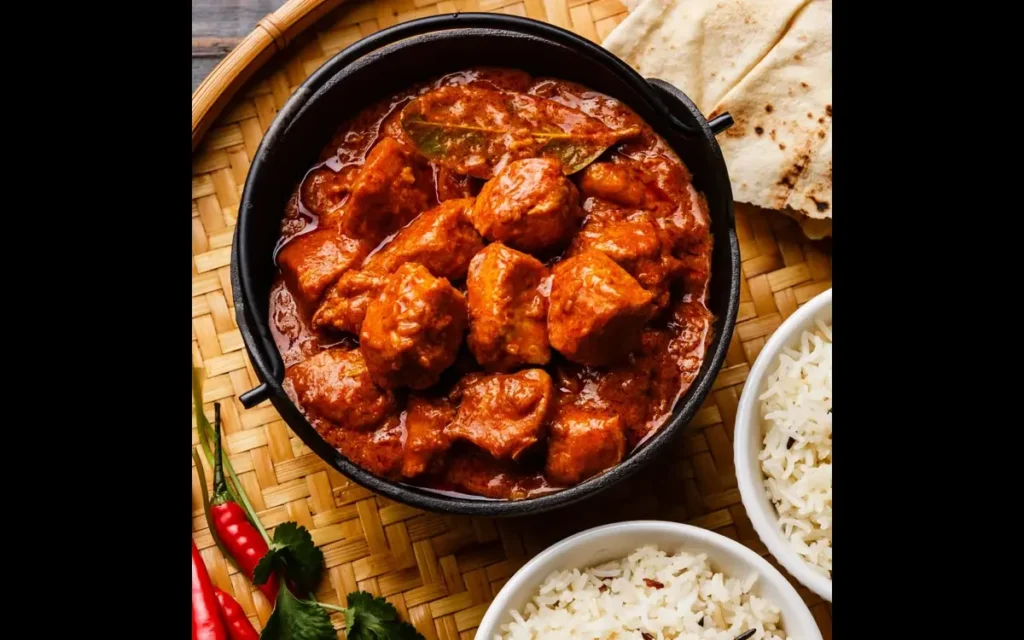
Ingredients:
For the Marinade:
- 500g boneless, skinless chicken thighs, cut into bite-sized pieces
- 1 cup yogurt
- 1 tablespoon ginger-garlic paste
- 1 teaspoon cumin powder
- 1 teaspoon coriander powder
- 1 teaspoon garam masala
- 1/2 teaspoon turmeric powder
- 1/2 teaspoon cayenne pepper (adjust to taste)
- 1 tablespoon vegetable oil
- Salt, to taste
Shop Here:
For the Sauce:
- 2 tablespoons vegetable oil
- 1 onion, finely chopped
- 2 tomatoes, pureed
- 1 tablespoon tomato paste
- 1 tablespoon ginger-garlic paste
- 1 teaspoon cumin powder
- 1 teaspoon coriander powder
- 1 teaspoon garam masala
- 1/2 teaspoon turmeric powder
- 1/2 teaspoon cayenne pepper (adjust to taste)
- 1 cup heavy cream
- 1/4 cup chopped cilantro (coriander leaves), for garnish
Shop Here:
Instructions:
For the Marinade:
- In a mixing bowl, combine yogurt, ginger-garlic paste, cumin powder, coriander powder, garam masala, turmeric powder, cayenne pepper, vegetable oil, and salt.
- Add the chicken pieces to the marinade and mix well to coat the chicken with the spices.
- Cover the bowl and let the chicken marinate in the refrigerator for at least 1 hour (or preferably overnight) to absorb the flavors.
For the Sauce:
- In a large skillet or pan, heat vegetable oil over medium heat.
- Add chopped onions to the pan and sauté until they become soft and translucent.
- Stir in ginger-garlic paste and cook for a few minutes until the raw aroma disappears.
- Add tomato puree, tomato paste, cumin powder, coriander powder, garam masala, turmeric powder, and cayenne pepper. Mix well to create the base sauce.
- Lower the heat and let the sauce simmer for about 10-15 minutes, stirring occasionally, until the oil starts to separate from the sauce.
- In a separate pan, grill or cook the marinated chicken pieces until they are fully cooked and slightly charred.
- Add the grilled chicken pieces to the sauce and mix well.
- Stir in heavy cream to create a rich and creamy texture.
- Let the Chicken Tikka Masala simmer for an additional 5 minutes to meld the flavors.
- Garnish with chopped cilantro before serving this flavorful Anglo-Indian creation.
Mulligatawny Soup and Chicken Tikka Masala are prime examples of the wonderful fusion of British and Indian culinary influences. These dishes not only showcase the creative blend of flavors but also represent the harmony between two distinct culinary traditions. Enjoy these Anglo-Indian delights and savor the best of both worlds on your plate!
Cooking Techniques and Tips
Understanding Bengali cooking techniques is essential to master the art. “Temper” or “Tadka” is a process where spices are fried in oil to release their flavors. “Bhaja” refers to frying, while “Bhapa” is steaming, commonly used for fish preparations.
Embracing the Essence of Bengali Ranna
Bengali Ranna is not just about cooking; it’s about love, family, and tradition. It’s an experience that embraces everyone, offering a sense of belongingness to its diners.
FAQs
What is the signature dish of Bengali cuisine?
The signature dish of Bengali cuisine is “Machher Jhol,” a light fish curry with vegetables, loved by people of all ages.
Can I use mustard oil in Bengali cooking?
Absolutely! Mustard oil is a quintessential ingredient in Bengali cooking and imparts a unique flavor to the dishes.
How is Mishti Doi made?
Mishti Doi is made by caramelizing sugar and adding it to thickened milk, which is then set to ferment, resulting in a sweet and creamy yogurt.
What is the best way to enjoy Phuchka?
The best way to enjoy Phuchka is to savor the burst of flavors by popping one into your mouth whole and relishing the tangy tamarind water.
Are Bengali sweets available outside Bengal?
Yes, Bengali sweets are available in various parts of India and even in some international cities with a significant Indian population. Many Indian sweet shops or restaurants offer a wide variety of Bengali sweets, including Rasgulla, Sandesh, and Rasmalai, to name a few. These delectable treats have gained popularity worldwide, and their unique flavors continue to captivate dessert lovers everywhere.
Conclusion
In conclusion, Bengali Ranna is a captivating journey through flavors and emotions. From the aroma of mustard oil to the delicate sweetness of Mishti Doi, every dish tells a story of Bengal’s culinary heritage. So, step into this world of enchanting tastes and create your own memorable Bengali feast.

